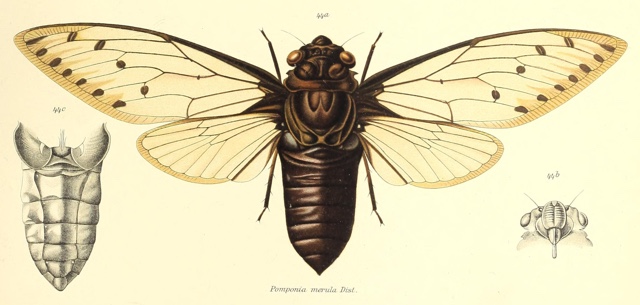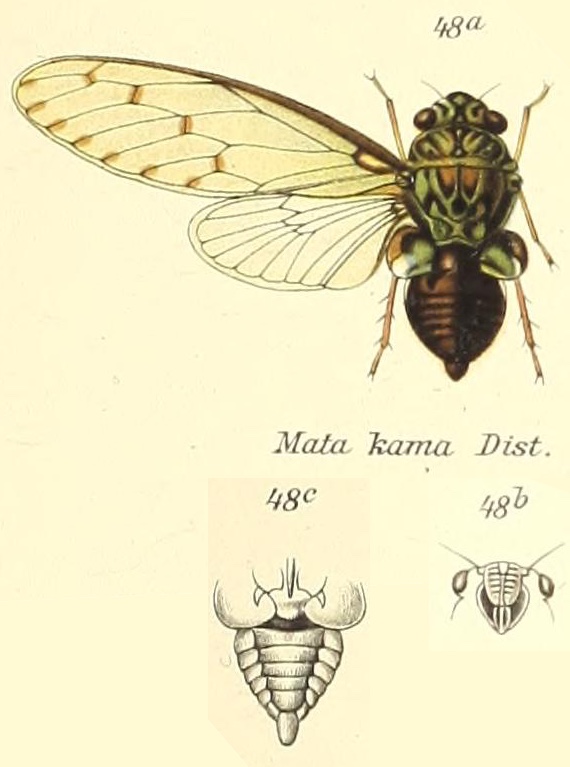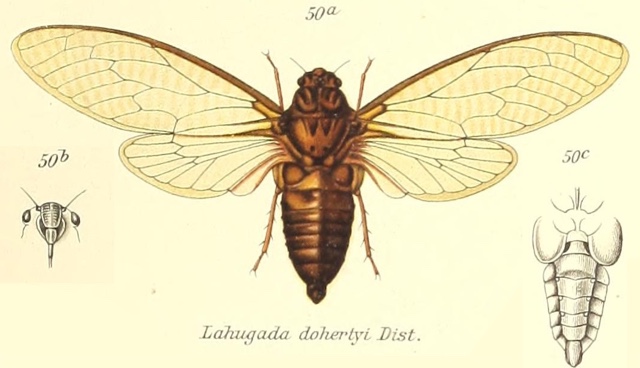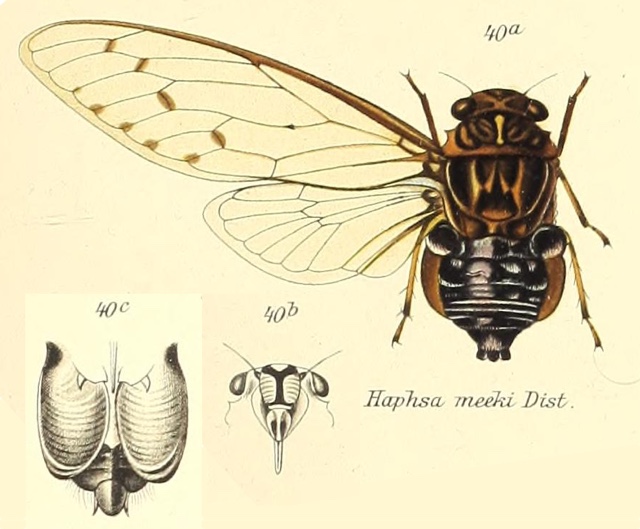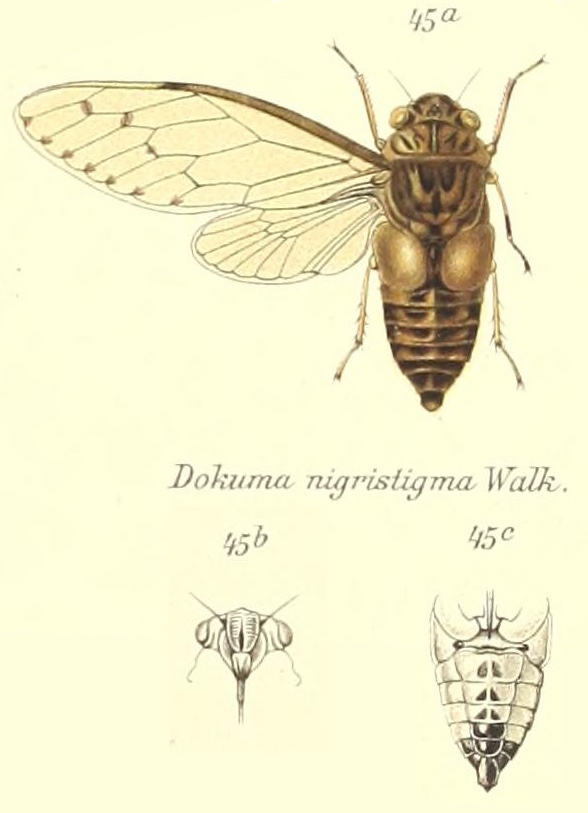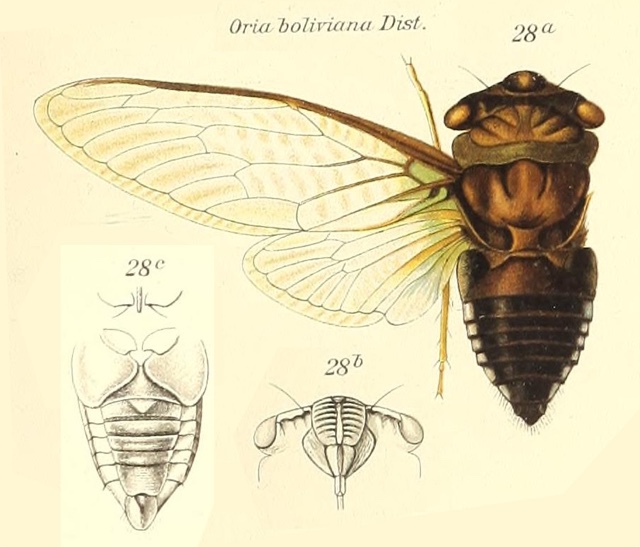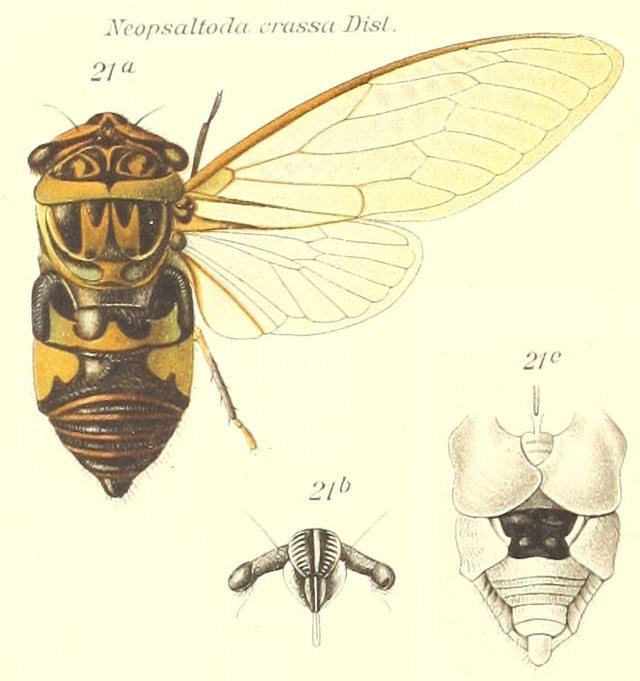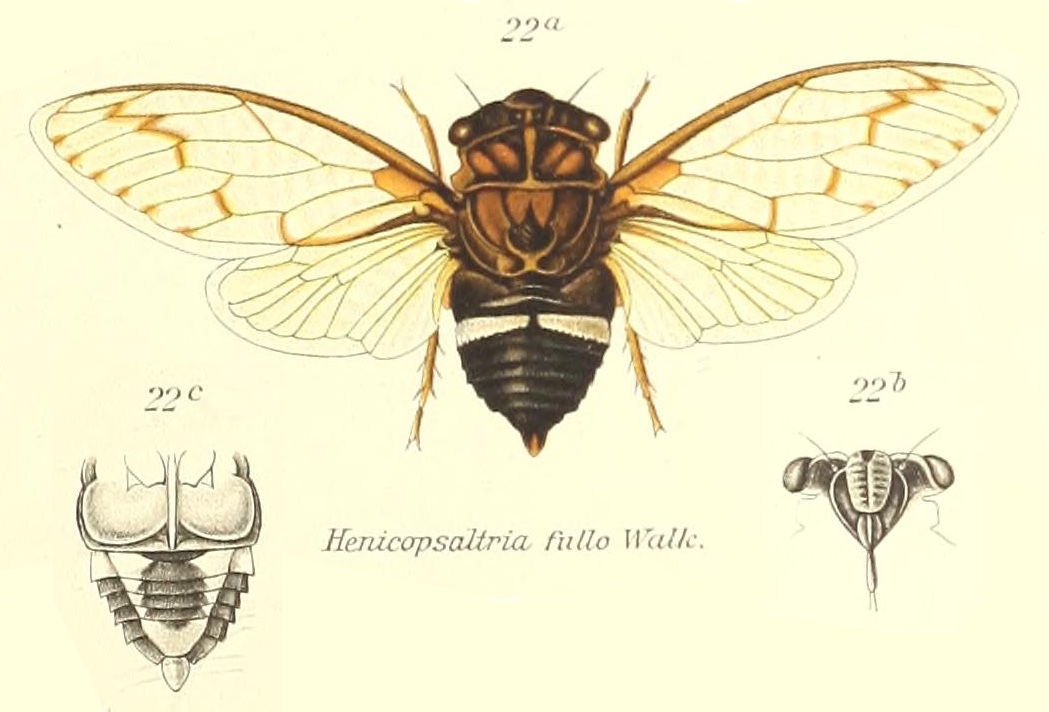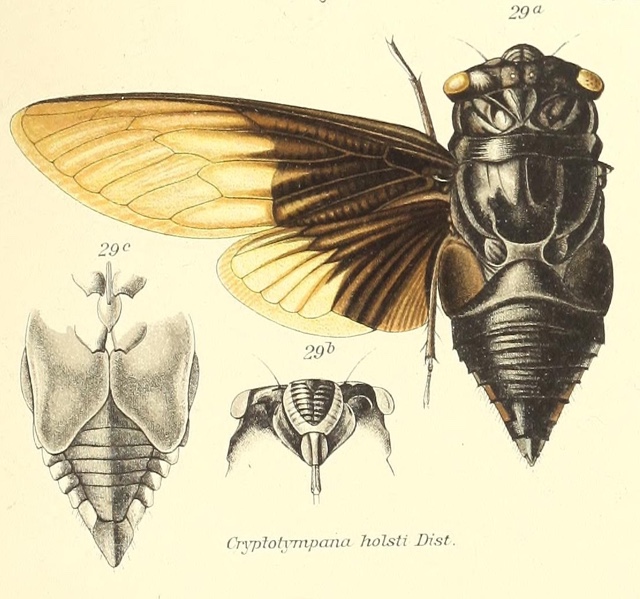Ariasa colombiae (Distant, 1892) is a cicada found in Columbia and Venezuela.
Scientific classification:
Family: Cicadidae
Subfamily: Cicadinae
Tribe: Fidicinini
SubTribe: Guyalnina
Genus: Ariasa
Species: Ariasa colombiae (Distant, 1892)
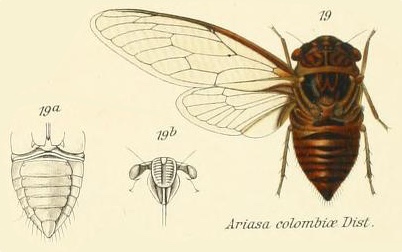
Ariasa genus description by W. L. Distant:
Characters. — Head (including eyes) wider than base of mesonotum, the eyes projecting beyond anterior pronotal angles, vertex at area of ocelli as long as or only a little shorter than front; posterior angles of pronotum more or less sublobately produced; abdomen about as long as space between apex of head and base of cruciform elevation; tympana largely exposed, the flaps only upwardly developed on the lateral areas; face large and globose; rostrum reaching the posterior coxae; opercula short, not passing base of abdomen; abdomen beneath prominently channeled at each lateral margin; tegmina and wings hyaline, the first with eight apical areas, basal cell a little longer than broad.
References:
- The illustration and description comes from the journal Genera Insectorum, and a specific article from 1914 by W. L. Distant titled Homoptera. Fam. Cicadidae, Subfam, Gaeaninae. Read it on the Biodiversity Heritage Library website.
- Species name verification comes from Allen Sanborn’s Catalogue of the Cicadoidea (Hemiptera: Auchenorrhyncha).
